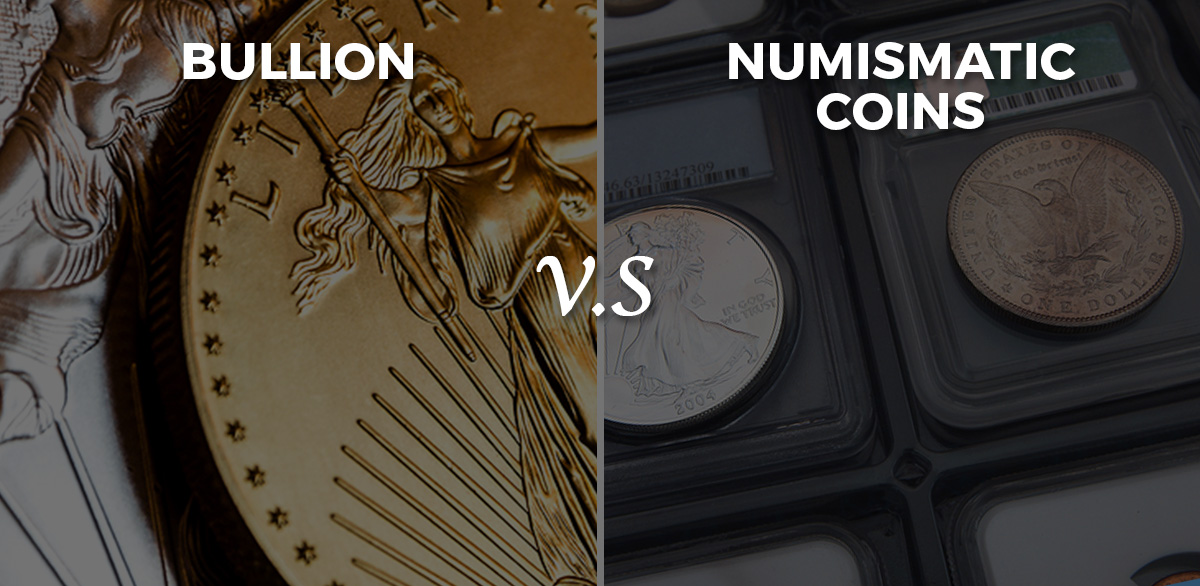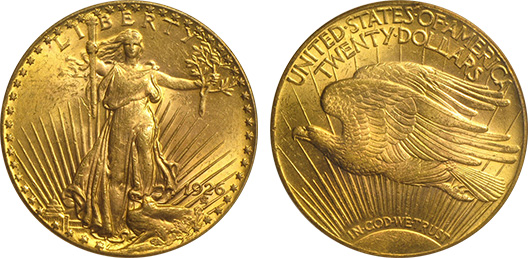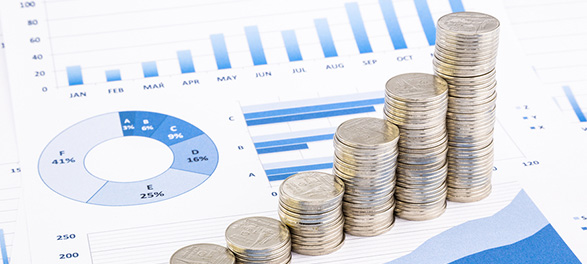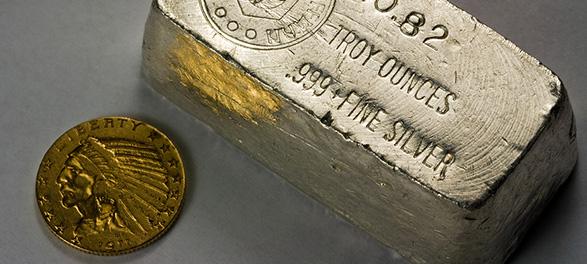
Numismatic coins are different from regular bullion coins. Many individuals who want to invest in physical gold or silver do so by purchasing gold and silver bullion coins or bars. It makes little difference whether you buy an American Eagle coin, Canadian Maple Leaf coin or a Philharmonic gold coin. The intrinsic value of gold or silver remains the same no matter what form it takes. However, when you invest in a rare gold or silver coin, your investment also has a numismatic value, which can be many times the value of the precious metal content of that coin.
What is Numismatic Value?

Numismatics, according to Merriam Webster, means “ the study or act of collecting of coins, paper money, and medals.” Numismatic coins are essentially rare or valuable coins that have an external value above and beyond the base value of the precious metal. Sometimes they are valuable because they are historical, one-of-a-kind, have special marks, or were minted in an out-of-the-ordinary way. There are many factors that can add value to a coin to put it in the category of numismatics, but they are all generally valued for being rare and collectable.
For example, a 1907 $20 St. Gaudens, High Relief Double Eagle gold coin, produced by the Philadelphia Mint, can be worth 500 times the spot price of gold. According to the Numismatic Guaranty Corporation (NGC) the estimated selling price for this mint state rare coin with a numerical grade of 69 is $685,000. Of the 11,250 St. Gaudens, High Relief Double Eagle gold coins minted, only a very few are known to exist with such a high mint state grade. NGC classifies coins with a numerical grade between 60-70 as Mint State. It makes a tremendous difference in the value of a coin as the rating goes up. For example, the St. Gaudens $20 gold coin is valued at $25,500 with a grade of 62, $62,500 with a grade of 65, and $180,000 with a grade of 67.
Understanding the Market

If you look back at historical precious metal prices over time, you will see that prices always go back up after substantial market corrections. While the spot price of gold or silver has a major impact on bullion coins (essentially only worth their melt value), rare gold and silver coins have the potential to appreciate in value in both up and down precious metal markets. Their value is more dependent on external factors like collector’s demand, rarity, auctioning and timing—outside of the regular market forces that usually act on the price of gold.
Investing in rare coins can be a very profitable venture, but it is also quite possible that your investment could lose value, so it’s important to understand that, like any investment, there are no guarantees. Unlike buying gold or silver bullion coins, you would do well to do extensive research and really understand the rare coin market, especially since each coin will be different. The market is not nearly as liquid as the bullion market, and finding willing buyers or sellers might be challenging at times. However, a knowledgeable rare coin expert can help guide you toward the most profitable and wise decision when it comes time to buy or sell your coins.
When buying or selling a rare coin, you have to know what that coin is worth in today’s market, and it might also be helpful to consider how the market may change in the future. You can use price guides and coin magazines to gauge general value and you can rely on prominent rating services like NGC and PCGS (Professional Coin Grading Service) to help understand different coin values. Finding a trusted coin dealer who knows the rare coin market is perhaps the best way to make sure you do not pay too much or get too little when you buy or sell a rare coin.
Long-Term Investment

If you are going to buy gold or silver rare coins for their numismatic value, consider being very selective with your purchases. You may want to plan to hold on to those rare coins for at least 10 years before selling, and remember that you cannot use rare gold or silver coins in a precious metal IRA. Numismatic coins operate differently than bullion coins on the market, and with the right know-how, they can be a terrific long-term investment—not to mention an enjoyable pastime.
It is up to you to decide whether or not to invest in rare coins. It is okay to invest in both rare coins and bullion coins at the same time. Also consider this: when gold prices are low, you may be able to find a better deal because more people are anxious to sell. If you have a long-term outlook, you may end up accumulating both rare coins and gold and silver bullion coins for later gains.


